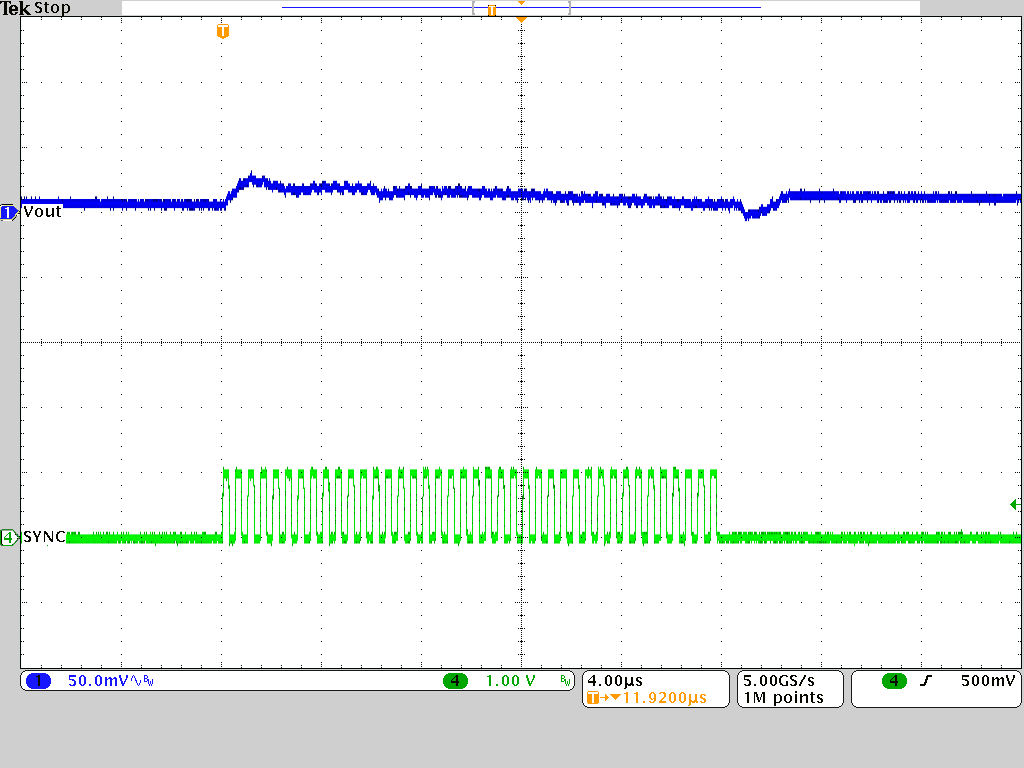SLUSEY7 December 2022 TPSM82816
PRODUCTION DATA
- 1 Features
- 2 Applications
- 3 Description
- 4 Revision History
- 5 Device Comparison Table
- 6 Pin Configuration and Functions
- 7 Specifications
- 8 Detailed Description
- 9 Application and Implementation
- 10Device and Documentation Support
- 11Mechanical, Packaging, and Orderable Information
Package Options
Refer to the PDF data sheet for device specific package drawings
Mechanical Data (Package|Pins)
- SIE|14
Thermal pad, mechanical data (Package|Pins)
Orderable Information
9.3.2 Synchronizing to an External Clock
The TPSM82816 can be synchronized by applying a clock on the MODE/SYNC pin. There is no need for any additional circuitry as long as the input signal meets the requirements given in the electrical specifications. See Figure 9-25. The clock can be applied, changed, and removed during operation. The value of the RCF resistor is recommended to be chosen such that the internally defined frequency and the externally-applied frequency are close to each other to have a fast settling time to the external clock. Synchronizing to a clock is not possible if the COMP/FSET pin is connected to Vin or GND. Figure 9-26 and Figure 9-27 show the external clock being applied and removed. When an external clock is applied, the device operates in PWM mode.

| VIN = 5 V | RCF = 10 kΩ | IOUT = 0.01 A |
| VOUT = 1.8 V | fEXT = 2.0 MHz |

| VIN = 5 V | RCF = 10 kΩ | IOUT = 1 A |
| VOUT = 1.8 V | fEXT = 2.0 MHz |